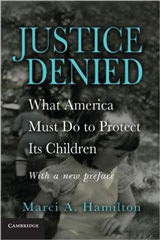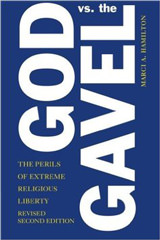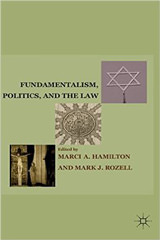I was here in Bellefonte, Pennsylvania on Dec. 13, 2011, when the state was supposed to preview its case against former Penn State Assistant Coach Jerry Sandusky, who is charged with 52 counts of sexual abuse, in a preliminary hearing. At the time, it seemed as if the entire media world had converged on little Bellefonte. The evening before the hearing, as I walked to the courthouse to pick up my media credentials, it was chilly and dark. I was moved by the eerie halo of light surrounding the courthouse—only to realize that a collection of satellite trucks was its source.
The gathering of press and members of the public was large, for the preliminary hearing had generated quite a buzz, and for some, anxiety. There were high expectations of drama.
Well, there was no drama. Sandusky waived his right to a preliminary hearing and disappeared. Yet, there were the media, planted in picturesque Bellefonte with no story, after a mere seven minutes in the courtroom! But with the media arrayed in front of the courthouse, it seemed that something had to be reported, even though virtually nothing had occurred.
First, the Attorney General’s Office’s representatives emerged from the courthouse, and spoke into a microphone on a lectern that had been set up for the occasion, but not for long. Then reporters grabbed whomever they could, in search of a comment for their cameras. Finally, Sandusky’s attorney, Joseph Amendola, showed up, after he had taken Sandusky for a quiet arraignment, and Amendola held forth for over two hours. His remarks were interminable and self-serving—almost as pathetic as the interview Sandusky did with NBC Sports reporter Bob Costas. After the first hour of Amendola’s rambling, it would have been refreshing to see the media trucks start up and drive away while he was still mid-sentence. Then, someone could have turned off all the lights on the courthouse square. But that didn’t happen either.
So what had been expected to be a week-long event turned into a morning/early afternoon event. Because the party broke up so prematurely, local cafes were left with food that they had prepared for hundreds of people, who never showed. I felt for the deli owner, who lamented that she had made 10 gallons of chicken noodle soup, with only a handful of people there. It was delicious!
The Sandusky Opening Arguments
Today, June 11, 2012, is significantly more low-key than were the proceedings last December. The weather is gorgeous—64 degrees and sunny, with a forecast high of 84. There are seats available in the Media section of the Courtroom, where I’m sitting, and the circus atmosphere has been replaced with a businesslike attitude. There are even a couple of rows of seats available for the public to occupy if they so choose.
Assistant Attorney General Joseph McGettigan III spread his notes on the wooden bar in front of the jury and stood close to the jurors, as though he was going to have a casual conversation with them. The most moving element of his presentation occurred when he put up images of eight of the victims, as they had been as children, on a huge screen upon the courtroom’s right wall. They were cute kids, no question. It was heartbreaking to see their smiles and their innocence, in the context of such a trial. Until the images were projected, the victims were only numbers. No more.
There were two pieces of evidence that Assistant Attorney General McGettigan referenced that I had never heard of before. First, McGettigan referred to Sandusky’s list of Second Mile children, a list that the prosecution had found when executing a search warrant. Apparently, there were stars or asterisks near the names of those Sandusky had victimized, and next to other names were ominous notations such as “no parents.”
Second, Sandusky had given his victims contracts that he had drawn up himself. Each contract promised the boy money (up to $1,000) for college and “hand money” as well, if certain milestones were met. At the top, the contract said that it was a contract between the boy and Gerald Sandusky (Second Mile). Taken together, with the rest of the evidence in the Grand Jury Report, these two documents put the creepiness factor of this case off the charts.
Sandusky attorney Joseph Amendola’s defense opening statement was memorable for its implicit concessions. For instance, Amendola said that he would not say that Coach McQueary—who said he saw Sandusky sexually assaulting a boy in the Penn State showers—was lying. Only that McQueary mistakenly interpreted what he saw. Curiously, though Amendola said Sandusky was “innocent,” he left out the word “alleged” in front of statements like “sex abuse” and “sex assault.” Aside from the niceties, when you got right down to it, Amendola seemed to have just one line of attack: all of the victims lied.
It seems that Sandusky may not be fully rational. Apparently, even his lawyers think so: This morning, they filed papers suggesting that they would raise a defense of “Histrionic Personality Disorder.” I’m no psychiatrist, but I can Google a term like anyone else (anyone else, that is, except the jurors, who were instructed, as is usual with juries, not to discuss or research the case). “Histrionic Personality Disorder” appears to essentially mean narcissism—which is right at the heart of the typical pedophile’s personality, so it doesn’t seem like much of a defense! I suppose when you are facing a stunning grand jury report, damning evidence provided by eight victims, and the Commonwealth hot on your trail, psychological mumbo-jumbo might be one tactic to introduce doubt. However, such a defense seems more likely to confirm the facts than to refute them, given the nature of the charges.
The First Witness to Take the Stand: Victim #4
Here is what Sandusky should have done: pled guilty. But he didn’t, so the trial started (after a lunch break) with Victim #4 taking the stand. This survivor is strong, and tough, and he had remarkable evidence to offer: pictures and letters, including one entitled, “The B-J Story.” That is not a typo.
Victim #4’s testimony was remarkably consistent and, moreover, made it clear that he had no desire at all to be there. Victim #4 told an ironic story of denying to his girlfriend of five years that anything improper had acted with Sandusky. She’d suspected a problem, because despite all his stories of their closeness during his childhood, he had not had any exchanges with Sandusky since they had met. It just didn’t add up to her.
To prove that it was all “normal,” Victim #4 set up a time for her to meet Sandusky. When they got there, Sandusky was so focused on Victim #4, including on rubbing his shoulders, that his girlfriend was completely persuaded that something had happened in the past. Victim #4 thus said that his scheme to persuade her that he had a normal relationship with Sandusky “did not work.” Obviously, it was doomed from the start, because of the kind of man Sandusky appears to be.
Victim #4’s brave testimony should be transcribed and shared around the world, because so many elements of it are straight out of a typical victim’s experience. As with all child-sex- abuse victims, his feelings were complicated.
Victim #4 was a boy essentially without a father, who did not get along with his stepfather, and who, therefore, lived with his grandmother, not his mother or father. Like most child predators, Sandusky gave this boy what seemed like love and real attention, offered exciting activities, and gave Victim #4 things and experiences that he could not have had any other way. Who better to create for a boy events he will remember all his life, than one of the winningest defensive coaches in Penn State history?
Victim #4 testified forthrightly that he did not want to give up any of this. He went to the 1999 Alamo Bowl, in which Penn State beat the Texas Aggies 24-0, with the former head defensive coach, for goodness sakes. What kid in his position would, or could, give that up? No one else had ever given him the same level of attention or the same cherished experiences. The abuse was woven deeply into the fabric of Victim #4’s childhood, while Sandusky’s grooming fulfilled his deep-seated needs as a child. This is the typical thicket of emotion and abuse that traps many a survivor.
Victim #4 then said, unsolicited, a statement the like of which I have heard from every child-sex-abuse survivor I have ever met:
“I thought I was the only person. Then I found out [there were others]. I feel if I had just said something . . . others might not . . . I feel responsible for the others.”
When survivors learn that they were not the only victims of a pedophile, guilt begins to torture them. They despair to think that not only did they not save themselves (which they often view as a failure), but they also made the world more dangerous for other children, who then suffered as they did. The guilt is extraordinary, and when Victim #4 expressed these very sentiments, I knew that he is the real deal. This is the labyrinthine suffering of the child-sex-abuse survivor. Of course, we on the outside can see very clearly that these victimized kids deserve no blame, and ought to experience no guilt. But survivors’ feelings often take these twists and turns, which shows the rest of us that the sexual assaults and abuse themselves are just the start of a cycle of suffering.
And that is just the first witness.










The last paragraph of your article is a compelling and concise description of what such abuse must be like. Thank you.
This is the best, by far, writings I have read on this subject, thank you, Marci Hamilton.